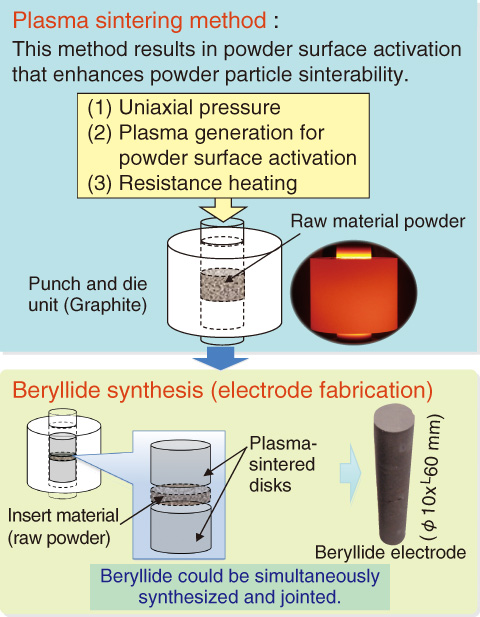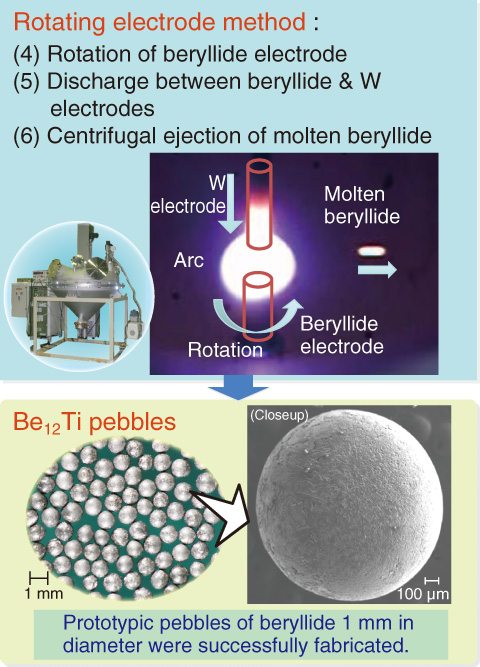
Fig.4-6 New beryllide synthesis by the plasma sintering method

Fig.4-7 Granulation by the rotating electrode method
The tritium used as a fuel in fusion reactors is produced by irradiation of lithium with neutrons that are generated by nuclear fusion reactions. A neutron multiplier is essential in effectively generating the fuel because this material increases the number of neutrons by reactions with the fusion neutrons. Beryllium metal, which is a conventional material for the neutron multiplier, has a low chemical stability at high temperatures. This has led to the development of fabrication technology for more stable beryllium intermetallic compounds (beryllides). Beryllide can be obtained by conventional powder metallurgy methods; however, it is very brittle.
Therefore, a plasma sintering method was applied in which synthesis is conducted after the surface of the raw material powder is cleaned by electric discharge. Further, this synthesis method was optimized in the DEMO R&D building at the International Fusion Energy Research Center site in Rokkasho-mura, Aomori-ken as a series of Broader Approach activities. As a consequence, an easily processed beryllide rod was successfully fabricated by the plasma sintering method (Fig.4-6).
Furthermore, using the beryllide rod as an electrode in the rotating electrode method, beryllide pebbles 1 mm in diameter were successfully fabricated for the first time worldwide (Fig.4-7); this value of the diameter is a target dimension for use in fusion reactors.
The present result substantiates the fuel tritium production tests in ITER and greatly contributes to the establishment of fuel production technology. Moreover, this result represents great progress in establishing fuel production technology toward the fusion demonstration reactor (DEMO) in the future.